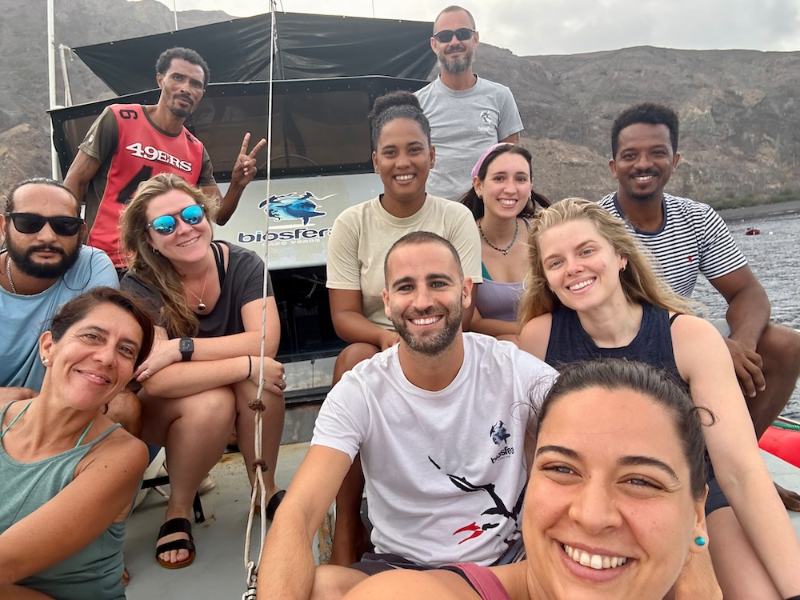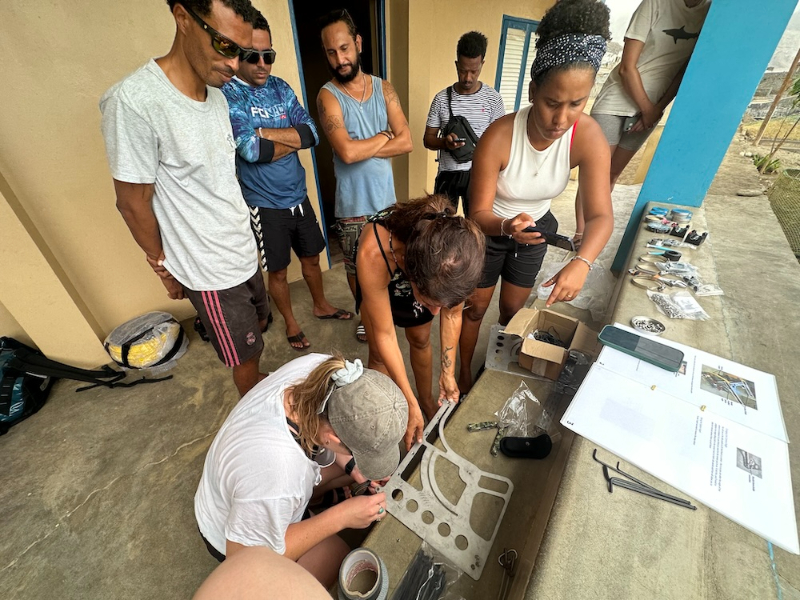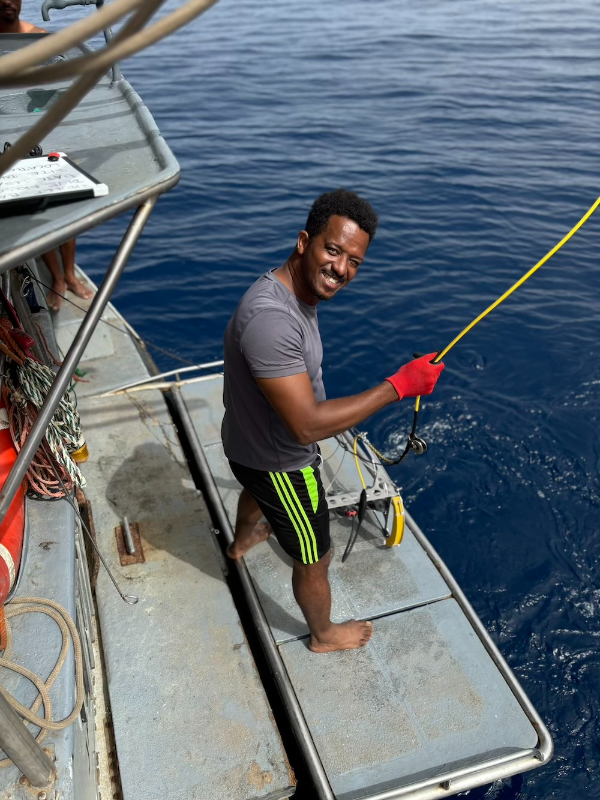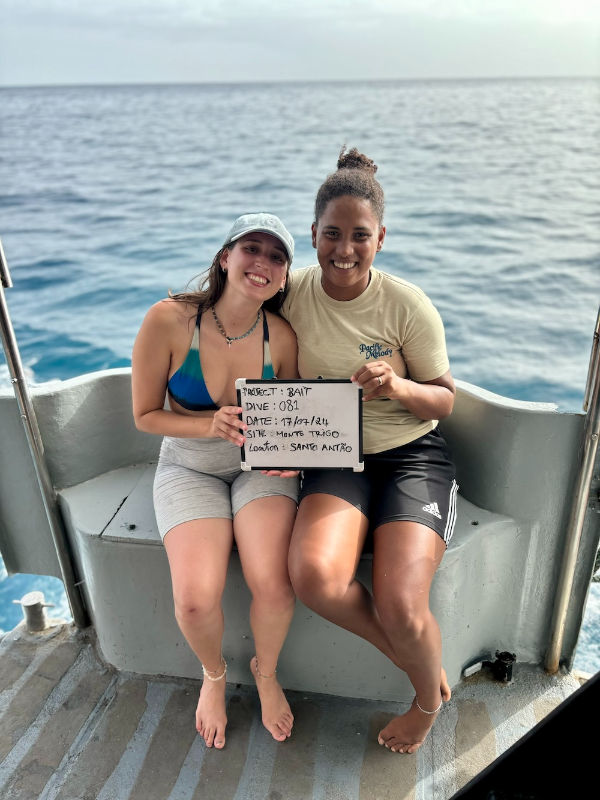Cabo Verde marine ecosystem monitoring

The expedition team aboard the Jairo Mora Sandoval. Pictured (L-R): Joel Oliveira, Gianone Carraro, Dave Spencer, Amelia Bridges, Carine Gomes, Jessica Ferreira, Adilson Semedo, Teresa Amaro, Alberto Queiruga, Imogen Napper, Sofia Ramalho. Credit - Sofia Ramalho.
Building capacity for marine ecosystem monitoring in Cabo Verde's archipelago
Building Local Capacity to Protect National Marine Biodiversity (BAIT) aims to enhance capacity and capability to observe and monitor marine ecosystems in the Cabo Verde archipelago. The project, led by the University of Aveiro, recently embarked on its first expedition to the island of Santo Antão with project partners from Portugal and the UK joining local scientists and crew. The aim of the expedition was to exchange knowledge, skills and equipment, enabling Cabo Verdean scientists to establish protocols for monitoring mesophotic ecosystems across the archipelago.
Training during the expedition covered how to build, maintain and safely deploy the camera, with follow up sessions planned on data analysis and incorporation into conservation management. Carine Gomes, a recent graduate from Universidade Técnica do Atlântico who will analyse some of the video data, said “I’m glad to have had the opportunity to be part of the BAIT project and work alongside such a driven team. It was a rewarding and enlightening experience that has significantly enriched my professional growth”.

The camera system, developed alongside the training programme by the University of Plymouth, will remain in Cabo Verde with the newly trained scientists as a permanent monitoring asset. Biosfera, an NGO whose mission is to engage local communities in the promotion of marine conservation around Cabo Verde, now own the camera system. “The training and data collection experience that the Biosfera team has received within the BAIT project will be essential in opening the field of action of our NGO, in order to establish monitoring and protection plans for our marine protected areas. We can now explore at greater depths and continue studying and learning about the ocean floor around our islands.” said Alberto Queiruga, Conservation Department Director at Biosfera.

As well as ecologists, the expedition also hosted local sociologists whose role within the project is to discuss conservation with local communities. Dr Adilson Semedo from Universidade de Cabo Verde discussed different conservation strategies with fishermen from two communities in Santo Antão, sharing how the biodiversity data can help evidence protection that can in turn promote fish stock recovery.
The team look forward to the project’s second expedition to Cabo Verde in November 2024. They will train more local scientists as well as six knowledge exchange fellows from other African nations who are interested in rolling out similar mesophotic monitoring projects.

Written by Amelia Bridges and Teresa Amaro. For more information on this Darwin Initiative Capability & Capacity project DARCC025, led by University of Aveiro, please click here.

 Back
Back